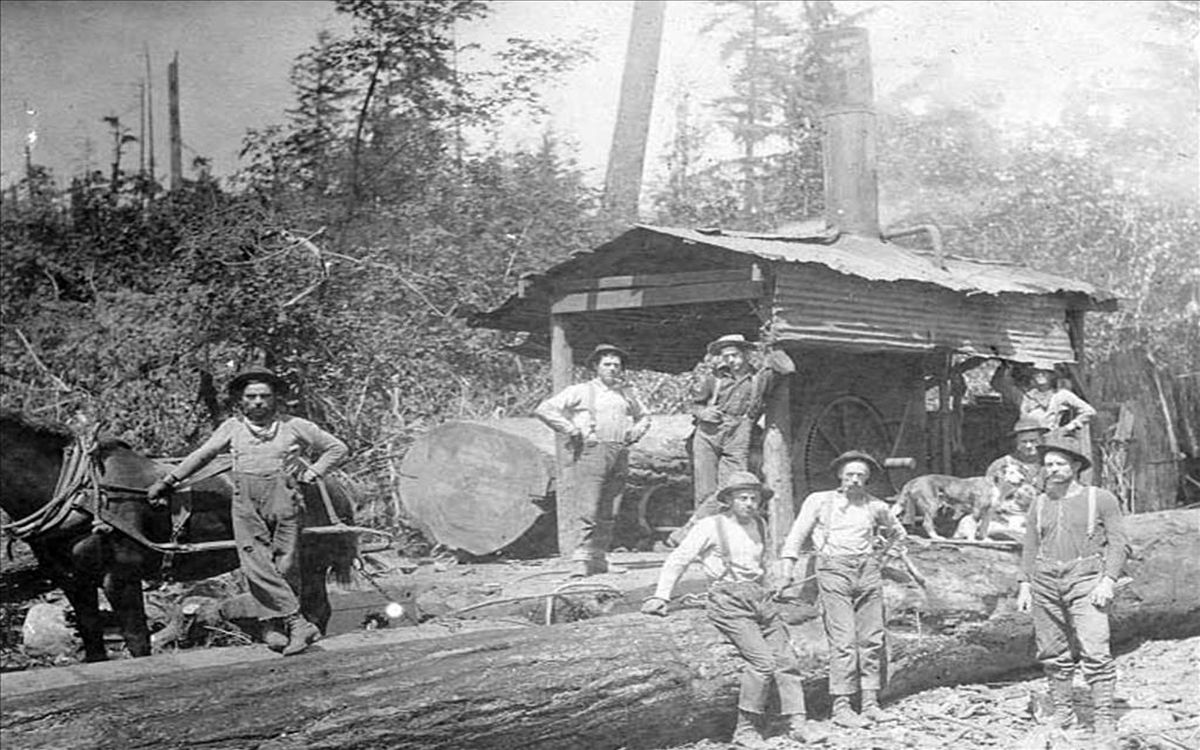Secrets Of Washington’s Lost Lumber Towns

Have you ever wondered about the hidden history of Washington's lost lumber towns? These once-thriving communities played a crucial role in building the Pacific Northwest. Today, many of these towns have faded into obscurity, leaving behind only traces of their bustling past. Imagine walking through dense forests, stumbling upon remnants of old mills, railroads, and homes. These ghost towns offer a unique glimpse into the lives of the loggers and their families who once called them home. Join us as we uncover the stories, secrets, and lasting legacies of Washington's forgotten lumber towns.
Secrets of Washington's Lost Lumber Towns
Washington State's lush forests once buzzed with the hum of sawmills and the chatter of lumberjacks. Today, many of these bustling lumber towns have faded into history. Let's uncover the secrets of some of these forgotten places.
1. Monte Cristo
Monte Cristo, nestled in the Cascade Mountains, was a booming mining and lumber town in the late 1800s. Its remote location made it a challenging place to live, but the promise of riches drew many.
- Ghost Town Vibes: Explore the remnants of old buildings and imagine life in this rugged environment.
- Hiking Trails: The hike to Monte Cristo offers stunning views and a peek into the past.
2. Bordeaux
Bordeaux, once a thriving lumber town, now lies in ruins. Located in Thurston County, it was home to one of the largest lumber mills in the region.
- Historical Ruins: Wander through the old mill site and see the remnants of the once-bustling industry.
- Nature's Reclamation: Observe how nature has reclaimed the area, with trees and plants growing over old structures.
3. Lester
Lester, situated in the Green River Valley, was a key player in the lumber industry. It served as a vital railroad town, connecting the lumber mills to the rest of the state.
- Railroad Relics: Discover old railroad tracks and equipment left behind.
- Scenic Beauty: Enjoy the picturesque surroundings and imagine the trains that once chugged through the valley.
4. Fairfax
Fairfax, located near Mount Rainier, was known for its sawmills and coal mines. The town's remote location made it difficult to sustain, leading to its eventual abandonment.
- Old Mines: Explore the entrances to old coal mines and learn about the town's mining history.
- Forest Trails: Hike through the dense forests that now cover the area, offering a peaceful retreat.
5. Govan
Govan, in Lincoln County, was a small but bustling lumber town. Its decline began when the railroad bypassed it, leading to its eventual desertion.
- Abandoned Buildings: Walk through the eerie remains of old homes and businesses.
- Wildlife Spotting: Keep an eye out for local wildlife that now inhabit the area.
6. Melmont
Melmont, located in Pierce County, was a coal mining town that also relied heavily on the lumber industry. Its remote location and harsh conditions led to its abandonment.
- Historic Bridge: Cross the old bridge that once connected the town to the outside world.
- Riverside Trails: Follow trails along the river and see the remnants of the town's infrastructure.
7. Port Blakely
Port Blakely, on Bainbridge Island, was once home to one of the largest sawmills in the world. The town thrived on the lumber industry but eventually faded away.
- Sawmill Ruins: Visit the site of the old sawmill and imagine the bustling activity that once took place.
- Island Beauty: Enjoy the natural beauty of Bainbridge Island, with its lush forests and scenic views.
8. Tono
Tono, in Thurston County, was a coal mining and lumber town that thrived in the early 1900s. Its decline began when the coal mines closed, leading to its eventual abandonment.
- Old Foundations: See the foundations of old buildings and imagine the town's former glory.
- Quiet Trails: Walk the quiet trails that now wind through the area, offering a peaceful escape.
9. Franklin
Franklin, located in King County, was a coal mining town that also had a significant lumber industry. The town's remote location and harsh conditions led to its decline.
- Mine Entrances: Explore the entrances to old coal mines and learn about the town's mining history.
- Forest Paths: Hike through the dense forests that now cover the area, offering a peaceful retreat.
10. Randle
Randle, in Lewis County, was a small lumber town that thrived in the early 1900s. Its decline began when the lumber industry slowed, leading to its eventual abandonment.
- Old Mill Site: Visit the site of the old lumber mill and imagine the bustling activity that once took place.
- Scenic Views: Enjoy the natural beauty of the surrounding area, with its lush forests and scenic views.
Hidden Gems of Washington's Past
Washington's lost lumber towns offer a glimpse into a bygone era. These hidden gems, scattered across the state, tell stories of hard work, community, and the rise and fall of industries. Exploring places like Monte Cristo, Bordeaux, and Lester reveals the rich history that shaped the region. Each town has its own unique charm, from abandoned buildings to scenic trails. Visiting these sites not only provides a historical perspective but also an appreciation for the natural beauty surrounding them. Whether you're a history buff or just looking for a unique adventure, these forgotten towns are worth the trip. They remind us of the resilience and spirit of those who came before us. So next time you're in Washington, take a detour to discover these fascinating remnants of the past.

